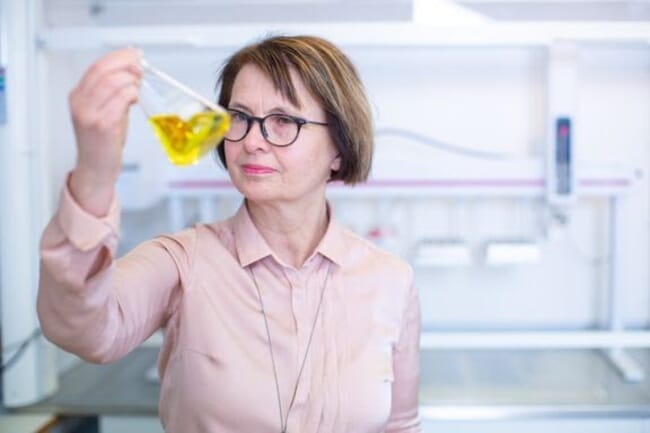
© Tone-Kari K Østbye, Nofima
Scientists particularly point to two synergies: one between the mineral zinc and the omega-3 fatty acids EPA and DHA, and the other between cholesterol and saturated fat.
Over the past decades, fish oil has been gradually replaced with vegetable oil in feed, and during this time, the salmon's requirement for saturated fat has not received sufficient attention, explains Nofima scientist Nini Sissener.
“Saturated fat has a greater impact on fillet quality than previously thought. Fishmeal and fish oil possess a unique composition of omega-3, saturated fats, and cholesterol. It is therefore important to assess what these changes mean for the quality of salmon raised on today’s plant-dominated feed,” she explained in a press release.
Sissener carried out this study while employed at the Institute of Marine Research.
The research revealed that frozen salmon fillets lost more liquid during thawing when sourced from fish that had received insufficient saturated fat during the growth phase. Additionally, low cholesterol level in the feed reduced the fillet’s firmness and red coloration.
Juvenile salmon require sufficient zinc and omega-3
Scientists have also studied how zinc levels affect health and resilience in small salmon in the freshwater stage.
High zinc and omega-3 levels have positive effects on scale development, wound healing in the skin, increased bone density and overall growth.
“Together with omega-3, zinc enhances skin health, and more omega-3 improves the utilisation of zinc. They are truly a powerful duo in salmon feed and act synergistically,” said Bente Ruyter, senior scientist at Nofima.
For robust growth under optimal conditions in land-based tanks, research shows that 6 per cent omega-3 of total fatty acids in the feed is sufficient.
Salmon require more when at sea
Trials were also conducted on larger salmon in sea cages, where scientists found that fish lost minerals and had lower harvest weights when fed low zinc diets. However, mineralisation improved when both omega-3 in the feed increased, and total fat levels decreased.
Ruyter has led this project and has long researched omega-3 fatty acid requirements in salmon feed. Ten years ago, omega-3 levels in Norwegian salmon feed were lower than today. When earlier research showed that salmon needed more omega-3, the industry quickly adjusted the feed composition.
Research from this project shows that salmon raised under challenging conditions in sea cages require more omega-3 for optimal growth, health, and fillet quality than those kept under ideal conditions in land-based tanks.
For example, salmon that received 11 percent omega-3 of total fatty acids in the feed resumed feeding more quickly after delousing than those fed 6.5 percent. Since feed intake typically drops after delousing, Ruyter emphasised that a rapid return to feeding is essential.
“What’s exciting about these findings is that the interaction between nutrients plays a key role in skin health, red coloration, energy metabolism, membrane fluidity, and the salmon’s ability to adapt to new production environments," said Ruyter.
And if there’s one ability modern Norwegian salmon need, it’s adaptability:
"Today’s production involves various technical solutions, warmer seas and more sea lice. To thrive through the production cycle with good growth, health and fillet quality, salmon need the right feed," Ruyter concluded.
The research project has been funded by FHF – the Norwegian Seafood Research Fund, and led by Nofima. Project partners included the Institute of Marine Research, Norwegian University of Life Sciences (NMBU), The Arctic University of Norway (UiT), National Research Institute for Agriculture, Food and Environment (INRAE), University of Gothenburg, Skretting Aquaculture Innovation AS, and Biomar AS.



